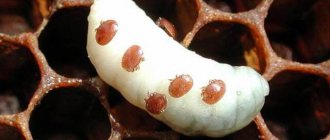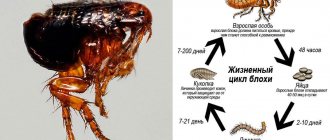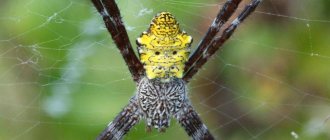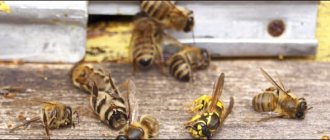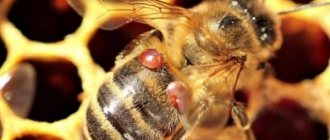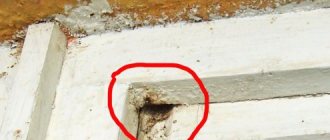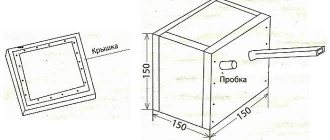Bees' home
Ground bees, true to their name, live in the ground. They themselves are not very willing to dig holes for themselves; they often use those free from rodents. They live in a swarm and build a home for themselves, only inside. One queen begins:
- Finds a suitable place.
- They build a hole and make a series of rooms.
- Leaves are placed on the bottom.
- Lay the first layer of eggs.
- They take care of the nutrition of the first generation.
- Nectar is placed in special chambers.
Honey production
Bees living in the ground remain bees. They live for one season, but store honey. There are a lot of people who want to get it, wild honey. The production process goes like this:
- Bees collect nectar;
- transferred and fermented;
- placed in wax honeycombs;
- sealed.
Lovers of wild honey from earth bees try in every possible way to get it - they steal their tunnels, for which they immediately become brutally bitten.
Character of bees
Ground bees are not harmful at all and have a calm character. But they can sting when it is necessary to protect offspring or their own territory. Their bite will not cause more trouble than the bite of other types of bees. Torment is caused only by manifestations of allergies in those people who are prone to it.
If you are bitten by a ground wasp, you need to:
- Remove the sting by carefully prying it up with tweezers or your fingernails.
- Disinfect the bite site with alcohol, brilliant green or peroxide.
- Treat with antihistamine cream.
Ground bee.
When to worry:
- if you have a tendency to allergies;
- if the bites were numerous;
- when the place was on the lips, larynx or tongue.
Common types of ground bees
Many species are representatives of the Red Book. They encountered people so often that they are now endangered. But there are some species that still occur periodically.
Andrena Clarkella
Andrena Clarkella.
A bee with a lot of fur, which makes it look like a bumblebee. The hind legs of this species are distinctively beautiful and prominent - they are densely covered with red hair.
They have a clear difference between the sexes: females are larger, rounder, and have a sting. Males, on the contrary, are thinner and have long antennae.
Leaf cutter
Leaf cutter bee.
A representative of solitary creatures that finds a place for a nest in the trees. It is very easy to notice their effect - they cut the leaves evenly or in a rounded shape.
These bees have a short lifespan - 2 months for the female and a month for the male. The parents mate, prepare the place, lay eggs and prepare shoots, and then die.
Woolbeaters
Little bees that love to live under the bark in trunks. These are frequent guests of botanical gardens and public gardens. They use wood to make cozy nurseries for children. They look very nice.
Woolbeaters.
Main types
The main types of earth bees include: Andrena-clarkella, Andrena-magna, Galikt sphecodes, Long-whiskered bee, Woolbites, Leafcutter (megaheels), Nomada (cuckoo), Mellitids, Carpenter.
Andrena-clarkella
Andrena-clarkella - in appearance, insects are similar to bumblebees (in a reduced form). A distinctive feature is the presence of red hind legs. The size ranges from approximately 8 to 17 mm. The color is varied: from black to blue, sometimes orange is found. The head and upper part of the back are covered with slight pubescence. Males lack a sting and differ from females by having long, thin whiskers that are brown or gray in color. Also, males are slightly smaller in size than females. Insects prefer to collect nectar from dandelions or coltsfoot.
Andrena Magna
A rare species of arthropod, and their numbers are rapidly declining. The length of the female is 16–19 mm, the male is 14–15 cm. The insect is black, the wings are black with a purple tint. The upper tergites (dorsal semirings) are dark brown. Males and females are visually indistinguishable from each other. The abdomen is almost completely covered with short light hairs. The upper lip, clypeus and spots on the upper jaws are yellow.
Galikt sphecodes
Galictus sphecodes are small bees measuring 5–15 mm, resembling a wasp. They differ from other species by their bright red belly or green, with a metallic sheen. The lifespan of this species is relatively short. The male dies soon after mating, the female lives until spring. But the founding female can live 4–6 years.
long-whiskered bee
Long-whiskered insects mainly live in the Mediterranean. They are distinguished by a gray-red body color. The length of the female is 14–16 mm, the males are slightly smaller. They have thick and long antennae (this is where the name came from). The larvae feed on stored nectar and pollen, collected mainly from leguminous plants. Two females can live in one nest.
Woolbeaters
Woolbites are a species of insects that live alone. They don’t build their own homes, so they occupy other people’s holes. Their offspring are raised in cells made from resinous substances and plant fibers. The insects are 12–15 mm in size and have a long proboscis, thanks to which they can collect nectar from flowers with a deep corolla.
Leaf cutters (megaheels)
Leaf cutters (megaheels) have powerful jaws, thanks to which they can gnaw right through plant leaves. The length of the female is 12 mm, the male is 11 mm. The color of the body is black, which is abundantly covered with gray and red hairs. They live in other people's burrows and use fragments of leaves to build nests. Insects are not honey plants, but excellent pollinators.
Nomad (cuckoo)
Nomad - looks very much like a honey bee, but cannot collect pollen due to the lack of a special apparatus. The size of the insects is 3–14 mm, the color is bright, dominated by a combination of black and red-yellow colors. The body is not covered with fluff. They do not build their own nests. The behavior is similar to cuckoos - they lay their eggs in other people's bee holes. Their larvae lead a parasitic life, are very voracious and are capable of killing a bee and feeding on the nectar it collects.
Mellitids
Mellitids are very similar to domesticated bees. The body, 8–15 mm long, is covered with long hairs, especially the tibia and the first segments of the hind limbs. They form large nests in the ground. Adults prefer to feed on pollen from legumes and aster crops. They are excellent pollinators.
A carpenter
The carpenter is a solitary, hard-working species, characterized by its large size: about 20–28 mm in length. The body is bright black, covered with sparse black hairs, small wings with jagged edges of a dark blue tint. They build their nests in cavities of old wood, which is why they are called “carpenters.” Sometimes they settle in ready-made rodent burrows or in natural depressions in sandy cliffs. The larvae develop in nests filled with nectar and pollen.
Neighborhood with earth bees
You need to start methods of dealing with earth bees with one question - is it worth expelling them? They do not live in large colonies and usually do not cause trouble.
Benefits of Ground Bees
Ground bee.
They pollinate flowers and trees well. Small animals store a lot of food for their offspring, and since their life span is short, they do this intensively and very actively.
Ground bees love alfalfa, which ordinary bees do not like. Colonies, especially leaf cutters, cope with this task very well and are even lured specifically for this purpose.
About the harm
And taking into account the fact that even a small probability of getting a bite can turn into big trouble for many people, such a neighborhood does not delight lovers of gardening. What makes the problem urgent is how to get rid of earth bees.
It is unlikely that acquaintance with wild earth bees will end with something good for the owner of a country plot. And this fact is explained by the behavior of insects. The inhabitants of underground tunnels differ from their honey relatives in their great aggressiveness.
If a worker bee bites a person only in case of a real threat, then her close relative, a dungeon dweller, can attack her victim in the absence of any reason.
In most cases, an earth bee sting is accompanied by a severe allergic reaction, the consequences of which can be swelling and redness, bronchospasm and increased heart rate, as well as pain and cramps.
Earth dwellers cause no less harm to surrounding plants by gnawing their foliage. And the construction of labyrinths underground will not bring much benefit to young seedlings. Therefore, the desire of every gardener to get rid of earth bees on the site is quite understandable. There are different ways to kill stinging insects.
Application of boiling water
One of the control options used is to flood the bee tunnels with boiling water. Typically this process requires at least 15 liters of boiling water, although the volume of liquid may vary depending on the depth and duration of the strokes.
Important!
It is preferable to carry out this procedure in the evening, when all the inhabitants are in their shelters. The result of such manipulations during the daytime can be numerous bites of offenders.
Such actions will prevent underground inhabitants from escaping. However, when using this method of control, one should not exclude the possibility of scalding the root system of plants.
Digging up soil
This method of control is quite suitable if the tunnels of underground inhabitants are shallow. Evidence that the excavations are not fruitless is the discovery of honey, which earth bees usually hide at the lowest point of their home. It is almost impossible to get to the underground inhabitants in deep labyrinths.
Also, when digging up the earth, there is a high probability of feeling the bite of a stinging insect, the consequences of which many people may not even be aware of. To prevent this from happening, it is imperative to use a protective suit and a mesh mask.
You should not try to simply fill the burrows of earth bees with sand or soil. This is not only useless, but also very dangerous, since the angry insects that crawl to the surface will sting all the people they meet along the way.
Traps
Traps are another method of getting rid of ground bees. It’s enough just to place bottles with a small amount of sweet syrup near the entrance to the hole of underground inhabitants. Wanting to eat, an individual that has crawled inside will no longer be able to get back out.
Application of pesticides
To remove earth bees, many gardening enthusiasts use pesticides, since this method of combating underground inhabitants is recognized as the most effective. But before using poison, experienced gardeners advise treating the nests of earth bees with a smoke spray. As a result, insects will become less active.
After this, you can use a toxic composition, which should be sprayed or even poured into the holes of the stinging inhabitants of the dungeon. Subsequently, all the holes are covered with earth, which will prevent the surviving bees from exiting outside. Thanks to this method of control, almost one hundred percent death of insects is achieved.
The following drugs can be used to kill wild bees:
- Get is an insecticidal product based on chlorpyrifos (5%). The contents of the package are enough to treat an area of 100 square meters. m.
- Delta Zone is a drug for fighting insects, which, according to expert reviews, is one of the most effective. The composition is odorless and has a high destruction rate, the result of which can be observed the very next day after treatment.
- Dichlorvos is a universal remedy designed to combat various crawling and flying insects.
Before you start fighting earth bees. Children and pets must be evacuated from the site. Since angry insects can take revenge for their disturbance on everyone who gets in their way. If there are too many earth bees on the site, it is preferable to use the services of a specialist.
Prevention measures
The following recommendations will help you avoid attacks and spread of earth bees:
- When working in the garden, it is better to wear clothing that is as closed as possible.
- There is no need to plant flowers in the garden with a strong fragrant smell that will attract insects.
- Wild insects don't like the smell of lavender. Therefore, it is enough to plant such a plant on your site so that the bees do not take a fancy to it.
Source: https://apest.ru/nasekomye/pchely/kak-izbavitsya-ot-zemlyanyh-pchel/
How to deal with earth bees
If you decide to start fighting bees, then you need to determine the method and prepare yourself. All measures must be taken taking into account safety requirements.
There are several basic ways to control insects.
Water
Boiling water works best and most effectively. Depending on the size of the nest, several buckets of water will be needed. They are quickly poured out and the entrance is closed with a stone. Repeat if necessary.
Fire
Any flammable liquid can be used. It is poured into a hole that the bees use as a nest and set on fire. This method should not be used near a barn or buildings. Beware of angry bees.
Poison
Special preparations that serve as poison will help get rid of earth bees. There are many of them on sale, produced in various forms. They spray the nest with them and close the entrance so that they do not fly out.
If necessary, a number of procedures must be repeated. After the nest is destroyed, the place is dug up.
Ground bees: photos, how to get rid of them
Ground bees are similar to ordinary bees, but they have a small population that prefers solitude in the wild. They are forced to coexist with humans due to the growth of urbanization.
Earth bees: photo + description
Based on the name, it should be taken into account that earth bees prefer to spend their time in the ground. They are bred in garden plots because they can cause harm to plantings, but the insects are listed in the Red Book.
Varieties
Bees are divided into species depending on color and lifestyle. They are united by their habitat: they prefer soil or bushes rather than trees.
Andrena-clarkella is a common species of earth bees, characterized by a variety of colors. There are black, blue and orange individuals, ranging in size from 8 to 17 mm, with pubescence on the head and back.
Andrena magna, habitat is the Black Sea coast, the species is listed in the Red Book. The length of the bee is 15-18 mm, it is black with purple wings, and the back is yellow. There are dense hairs on the head and body.
The long-haired bee, distributed from Europe to Kazakhstan, has a distinctive feature - the ability of two females to coexist simultaneously in a nest. Individuals are medium in size, grayish-yellow in color with long antennae.
Galictsphecodes are ubiquitous, similar in appearance to bees, but reddish or greenish in color. The size ranges from 5 to 15 mm.
Woolbites are small, well-fed bees that do not dig holes, but prefer to use ready-made ones. They are brown with yellow spots. A distinctive feature is the aggression of males towards other insects.
Leaf-cutter bees are solitary bees that construct a nest using leaf plates. They have strong jaws, but are unable to produce honey. They are protected by the Red Book of the Stavropol Territory.
Nomad: they are similar in appearance to honey bees, but are practically hairless and do not have an apparatus for collecting pollen. Their second name is cuckoo bees: they do not build nests, but breed in other people’s nests, borrowing supplies.
Mellitids are a type of earth bee similar to honey bees. Nectar is collected only from asteraceae and legumes.
The carpenter bee has a distinctive feature - its ability to buzz loudly. The insect is large in size, has blue wings with purple tints and dark blue eyes. Prefers a solitary existence.
Appearance
There are more than 1,500 subspecies. Many of them are monoviltine: capable of producing only one offspring per year. Some varieties produce 2 generations in a given period of time.
The difference between earth bees:
- small sizes: females 1.8-2 cm, males a few millimeters smaller;
- hairiness: thick fur allows the bee to survive in an earthen nest (it is colder in it than in a hive);
- color: insect wings with purple splashes, the head is often dark shades (black or brown), body color is varied: there are individuals of green, orange or black shades.
The most important and basic difference is the desire to dig minks and build nests there.
Habitat
The location of the underground bee depends on the species. The habitat is widespread, with the exception of Oceania and South America.
They are capable of settling not only in wild conditions, but also in garden plots. They often act as pollinators and do not cause any harm to the garden. If there is no interference in their lives, they are peaceful.
What you need to know about security
Ground bees are dangerous representatives of the species. Although they themselves do not attack on a whim or of their own accord. But in case of danger, they will launch their attack.
When working with bees, you must follow safety precautions:
- Wear a protective suit when working to protect against bees.
Protective suit for working with bees.
- It is better to work in the dark, when insects are less active.
- Chemicals should be diluted and used strictly according to instructions.
- If insects begin to attack, it is better to flee. They attack as a whole group very easily and quickly.
- During work, protect children and pets, even warn neighbors.
How to secure the site
Typically, earth bees do not cause much trouble or harm to people. Their small family usually settles close to a food source and does not interfere with human habitation. But they happen; they are attracted to gardeners without knowing it.
Honey plants are very popular with bees, who prefer to feed on their pollen and nectar. A large number of them will attract Hymenoptera.
Accordingly, it's the other way around. There are those plants that repel insects with their smell. These include:
- lavender;
- calendula;
- basil;
- Melissa;
- sagebrush;
- mint.
How to get rid of neighbor's earth bees
Insects that have settled in the neighborhood can also cause a lot of trouble.
If for some reason the neighbors do not get rid of them, you can use several tricks:
- Build a solid fence of polycarbonate or corrugated sheets 2-3 m high. An expensive but effective method. The bees will have to climb high up, and they will fly over the area.
- Plant plants that insects do not like in several places: peppermint, wormwood, lavender, lemon balm.
- Treat the areas most liked by the swarm with a decoction of citrus fruits. To do this, you can pour boiling water over lemon or orange skins and boil.
Be sure to read:
What does the queen bee look like: description, stages of development, when replacement is necessary
